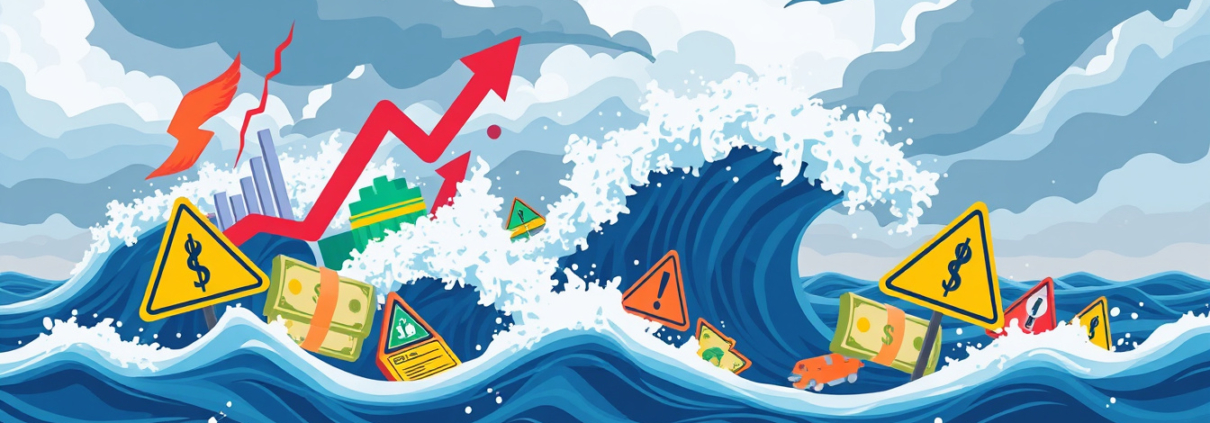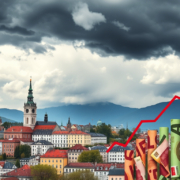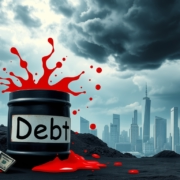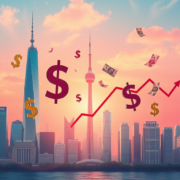Why We Shouldn’t Ignore This Next Inflation Wave 🌊 and Economic Risk
As economists and the Fed expect a recession in the second half of the year, we must track unfolding economic risks and inflation. Talk of this downturn brings worries about how long and how bad it might be. It also shows how inflation will shape economic recovery.
The Fed’s Credibility Challenge
For many years, the Fed acted as a safety net. In the past 15 years, inflation stayed below 2%. Recently, inflation jumped to near 9%. This jump forced the Fed to raise rates quickly—from almost zero to about 5% in a short time.
This fast rate change shook the finance world. Regional banks felt the impact first. The Fed once said that inflation was temporary and the recession would be mild. Those words now fall short. Many investors now expect a stronger downturn. History shows that stock markets fall even when the Fed cuts rates because such cuts can point to deeper problems.
Inflation’s Tough Last Mile
Inflation may fall from its recent high as supply problems ease and energy prices drop. Yet, the tough part is to push inflation below 2% for a long time. A more likely outcome is that inflation stays near 3% for many years.
This last step is very hard. It is like trying to get a six-pack after reaching a decent level of fitness—it takes extra effort. Core inflation, which does not count food and energy, shows that this change is hard. Recent CPI numbers went up only a little when food and energy were removed.
Economic Risks in the Banking Sector
The immediate banking crisis seems to have cooled, but risk still lingers with regional banks. The regional bank ETF (KRE) has not bounced back well. This sign points to risks that remain open. Leaders such as Jamie Dimon warn that banking troubles are not over and hint at small problems to come.
The jump in rates creates strain on banks, especially for those with high-cost loans and narrow portfolios. If the Fed cuts rates to soften the downturn, markets may fall. This drop could signal deeper financial troubles.
Market Behavior and Investor Strategies
Even with these warnings, many investors act in a “risk on” mode. They feel hope as inflation eases and fear subsides. Yet, the market stays unstable and calls for quick moves:
- Buy after price drops: Do not chase prices after long rises. Wait until prices find a support level.
- Watch for areas where support lines come together. For example, gold might hold near $1900–$1925 an ounce and then rise further.
- Note that silver faces extra headwinds because of its industrial use. This may hold back its gains even if it remains a safe asset.
Rapid changes driven by fear and excessive buying create a market for skilled, careful traders—not for those who shy away from risk.
The Bigger Picture: What Could Lie Ahead?
Fast rate hikes and ongoing inflation mean the economy may face major shocks. The earlier bank issues might be early signs before bigger challenges come.
Expect the recession to last longer than first thought. It could stretch over one or two years. This possibility makes smart money management and careful planning even more important for investors and businesses.
Key Takeaways:
- Fed optimism is now in doubt. Get ready for a longer, deeper recession.
- Inflation may stay above 2% for a long time. This will keep monetary moves limited.
- Banking risks remain, mostly with regional banks.
- Investors should aim to buy after price drops during market shifts.
- Gold may serve as a safe place in shaky times.
FAQs
Q1: How do Fed rate hikes put banks at risk?
Quick rate rises push up borrowing costs. They also lower bank asset values. This is a problem for banks with narrow loan pools and can lead to financial trouble.
Q2: What is a midlevel recession and why is it important?
A midlevel recession is worse than a light downturn but not as bad as a depression. It means weak conditions may last one or two years, which can hurt jobs, company profits, and investor returns.
Q3: How can investors protect themselves during economic uncertainty?
Investors can protect themselves by spreading risks. They should not buy after a long price run; instead, they wait for price drops to a support level. They might also use safe assets like gold to limit potential losses.









